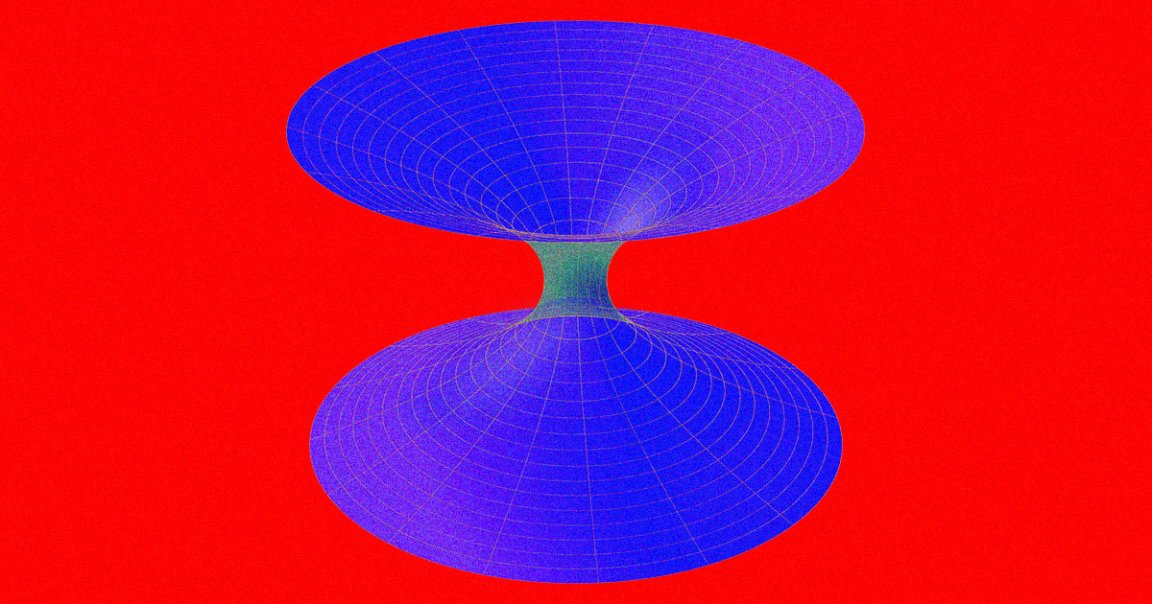
Thinking With Portals
Scientists think they’ve come up with a way to detect traversable wormholes, assuming they exist.
There’s never been any sort of evidence that traversable wormholes — portals between two distant parts of the universe, or two universes within a theoretical multiverse — are real. But if they are, a team of scientists think they know what that evidence might look like, breathing new life into a far-out theory that could finally achieve faster-than-light travel.
Telltale Wobbles
If a wormhole were to exist, then the gravitational pull of objects on one side, like black holes or stars, would influence the objects on the other side.
If a star wobbled or had otherwise inexplicable perturbations in its orbit around a black hole, researchers could hypothetically argue that they’re being influenced by the gravity of something on the other end of a wormhole, according to research published this month in the journal Physical Review D.
“If you have two stars, one on each side of the wormhole, the star on our side should feel the gravitational influence of the star that’s on the other side,” said University at Buffalo physicist Dejan Stojkovic. “The gravitational flux will go through the wormhole.”
Occam’s Razor
While the researchers hope to look for wobbles in the orbits of stars orbiting near Sagittarius A*, the supermassive black hole at the center of the Milky Way, Stojkovic concedes that spotting some wouldn’t guarantee that a wormhole exists there.
He added “we cannot say that, ‘Yes, this is definitely a wormhole.’ There could be some other explanation, something else on our side perturbing the motion of this star.”
READ MORE: How to spot a wormhole (if they exist) [University at Buffalo via Phys.org]
More on wormholes: Physicists Publish Instructions For DIY Wormhole